Saint-Barth, a very tempting island
Destination - AtlanticIt's just a small rock in the Tropics but is adored by the jet-set... it boasts sublime anchorages, an exceptional stretch of water and the trade winds to round it all off. To take advantage of all this, there is nothing better than chartering a multihull in nearby Saint-Martin.
CAPTAIN'S LOG
Mention St. Barth and everyone immediately thinks bling bling, stars galore and very VIP parties... During the Christmas holidays, this is pretty much how it is. But for the rest of the year it's a different story! Of course, the luxurious villas with green or red roofs will always be home to celebrities. But these celebs are discreet and willingly adopt the St. Barth lifestyle (as the locals call it). Flip-flops, shorts, crumpled T-shirt and a baseball cap make up the uniform adopted by everyone. It's all about simplicity, comfort and discretion. A posture? Not really, judging by the efficient way that the inhabitants managed to put right the heavy damage caused by hurricane Irma in September 2017. So much for the social decor. As for the scenery, get ready for a feast for your eyes: Saint-Barth offers magnificent beaches bathed in warm, turquoise waters all year round, breathtaking panoramas and a multitude of small islets that offer inviting anchorages. There's no doubt that Saint Barth is all about the sea.
THE GUIDE TO ANCHORAGES (AND BEACHES)
Each spot is more beautiful than the last one... wild, full of celebs or just popular: there's something for everyone! But not all of them are quiet. Let's start with the most famous one, Le Colombier, in the northwest, and then take a complete clockwise tour of the island.
Le Colombier Beach
One of the most iconic on the island. Locals sometimes call it “Rockefeller Beach” because it is here that the billionaire businessman had a superb villa built in 1957. It is now abandoned... Nestled on the north-western side and facing west, this beach is sheltered from the trade winds. It's a safe anchorage with particularly crystalline waters. The beach is not that busy as access from the land requires a 30-minute walk (on a magnificent path).
Baie Saint Jean
This is located a little further south and is close to where the airport is situated (with one of the Caribbean's shortest runways). Just watching the small planes take off and land is a spectacle in itself... The beach is well protected by a rocky plateau but is still accessible by boat, offering many anchoring possibilities on a very calm stretch of water. White sand, coconut palms and the star of the show: the famous baroque Eden Rock, the oldest hotel on the island.
Anse de Lorient
A little further to the north-east, it offers many possibilities with an offshore surf spot and yet very calm waters along the beach. It is here that families like to get together. No fuss, simplicity, but access reserved for small multihulls - or the dinghy.
Grande Saline Beach
Still on the south coast, but further west, you will discover the island's largest beach, Grande Saline which is indeed next to salt marshes. It's a wild spot and the dune is vast. There is a bit of surf, but anchoring during the day is possible, especially for a multihull, which rolls much less than a mono. This beach is frequented by a very varied clientele, so if you come with children make sure you find the appropriate area!
Anse du Gouverneur
Even further west, the beach at Anse du Gouverneur is particularly steep and offers an exceptional panorama. Not very busy, it is a good daytime anchorage, even if the surf, like its bigger neighbor, is sometimes rather strong when the swell offshore is strong and/or southeasterly.
Shell Beach
We then head around the extreme southern tip of St. Barth, taking a north westerly direction towards the port of Gustavia. Just before getting there, there is a beautiful beach full of shells on the starboard side; this is Shell Beach. Turquoise water and pink shells offer a delicious visual cocktail for the eyes - a little less so for bare feet! This beach is frequented by locals rather than tourists. On a multihull, this is an excellent afternoon anchorage to enjoy swimming before arriving in the harbor.
Public and Corossol beaches
A little further on from Gustavia, there are two more spots to mention: Public beach, located in the heart of the industrial area but nevertheless clean and pleasant - this is where the sailing school is based - and Corossol, a picturesque little cove with its traditional huts and fishing boats.
Ile Fourchue
Uninhabited and part of the Nature Reserve, this arid rock stands in sharp contrast to Saint-Barth: here, vegetation is indeed non-existent, except for cacti... There are mooring buoys, to the lee of the island, and it’s well sheltered. The atmosphere here is much calmer than Gustavia.
Saint-Barth: A Short History
The island's history is as intoxicating as a fine champagne: the Mecca of buccaneering, this small 26km² (10 sq mi) rock which became French, was handed to Sweden in exchange for a trading post in 1784. Barely a century later, in 1878, the Swedes gave it back to France for... nothing at all! So, since when did Saint-Barth become one of the jet set's must-visit spots?
There are still a few monuments remaining from the island's history that are not to be missed. Most of them are accessible on foot from Gustavia: the Swedish battery of Fort Gustav II, the church, the Swedish bell tower and the Governors' house are worth a visit.
St. Barth: Practical Info
Access by sea
The island's main connection is with the nearby island of Saint Martin/Sint Maarten (half French, half Dutch) - 15 miles to the north-west. Several sea links are available - crossings take 45 to 75 minutes and cost from €50 per round trip. It is also possible to reach St. Barth by taxi boat.
Access by plane
Sint Maarten (the Dutch side of the island) has an international airport with connections to Europe, the United States and the Caribbean area. Reaching St. Barth by plane is a unique experience, reserved for pilots who have completed a special qualification: the runway, only 600 m (1,970’) long, is wedged between a pass and the sea... thrills (and hopefully no spills) guaranteed! The planes are therefore small and only fly during the day given favorable weather conditions. Most of the flights make the trip between Saint Martin and Saint Barth in only 12 minutes, from €140 return. There is also access from Guadeloupe, Puerto Rico and Antigua.
Chartering a multihull
There is no charter base on the island. But large fleets of catamarans are available on Saint Martin, a three-hour sail away. Renting a sailboat in Martinique - 255 miles away - can be worth it if you are looking for a particular type of vessel: many fast multihulls are indeed based in the port of Le Marin.
Main charter companies in Saint-Martin:
Blue Lagoon, Dream Yacht Charter, Sunsail, The Moorings, TradeWinds.
Weather Check
From October to June, Saint-Barth is subject to the trade winds - which blow from the NE to SE - and maintain a steady 10 to 25 knots over very long distances. As a result, there is often quite a heavy swell, combined with a little choppiness. As you would expect, the windward coast is much more exposed than the leeward coast, where the port of Gustavia and the main anchorages are nestled.
From December to April, the weather is rather dry and not too hot, averaging 25°C (77°F). For the rest of the year the weather is much more humid and warmer, averaging 27°C (81°F). Average annual rainfall can be as high as 1,000 mm (39”), but the nature of the soil, the heat and the absence of springs and streams results in dry vegetation.
The Port
The only port on the island is Gustavia. It is perfectly protected from the trade winds. Just the wake from the odd boat breaks the surface of the water. The boats moor up stern-to the quay, using a lazy line. The outer harbor opens onto a vast bay where it is possible to pick up one of the mooring balls. Ashore, there are many possibilities for eating out and stocking up on supplies.
Practical Info
In addition to the many guidebooks dealing with this sailing area, Turquoise, a compact and free guide, devotes a good ten pages to Saint Barth. It's worth having on board. You'll find it everywhere on Saint-Martin!
Not to be missed
If there's one café-restaurant not to be missed, then it is without doubt Le Select! Contrary to what its name might suggest, the oldest restaurant on the island is known more for its easy-going atmosphere, its burgers and flavored local rums!
What you must see in Gustavia: the Swedish bell tower and the building of the former prefecture, both vestiges of the historical Swedish presence, the Catholic and Anglican churches and of course the traditional huts which have resisted fires, hurricanes and all the other ravages of time...
If you have time, rent a car. Ideally a small one (as the roads are narrow and steep), and marvel at the panoramas and the 14 secret beaches.
Destinations offered by
View all the destinations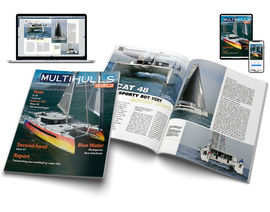
Subscribe and get 8 issues a yearfor just $39.90
subscribeClassified ads
View classified adsSAMANA 59 VERSION PROPRIETAIRE DE 2022
- Location :
- Cogolin, France
- Year :
- 2022
 Discover the 2025 winners!
Discover the 2025 winners! 
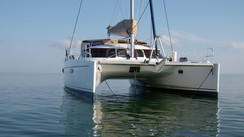
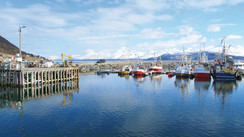
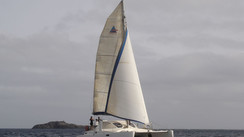
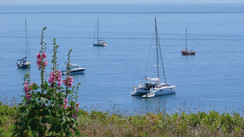
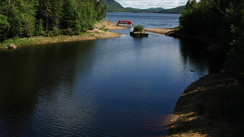
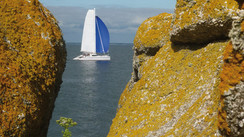







What readers think
Post a comment
No comments to show.